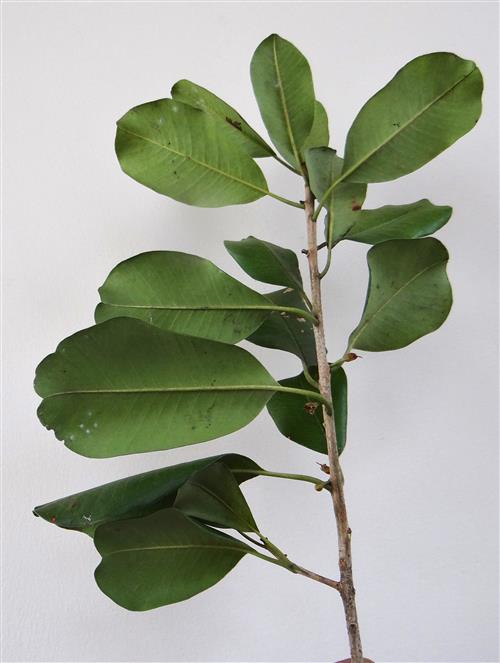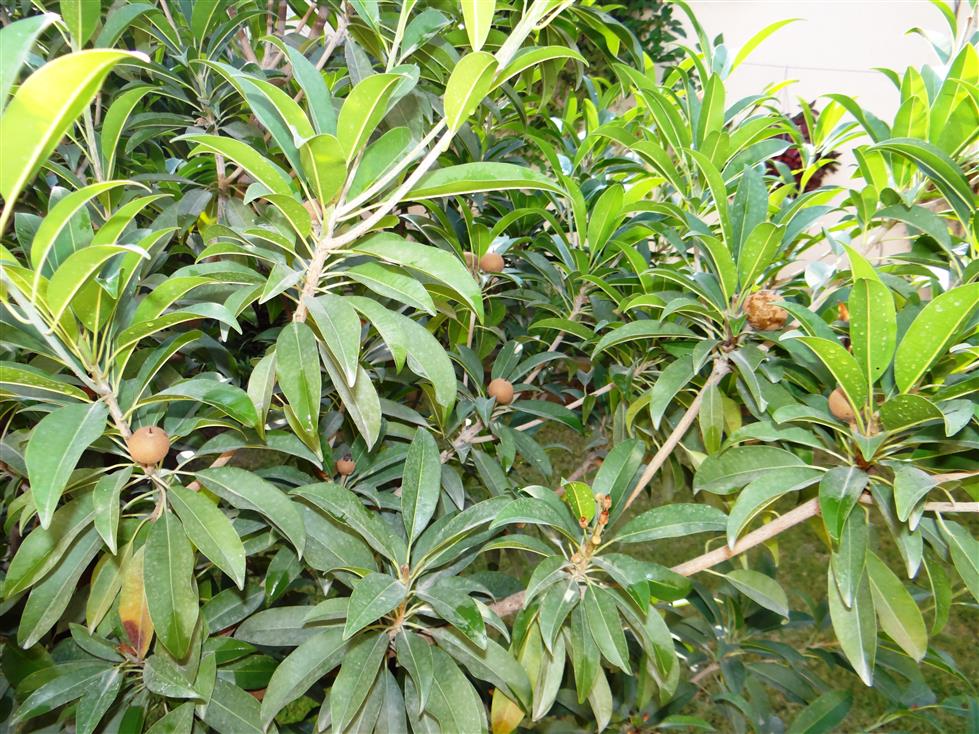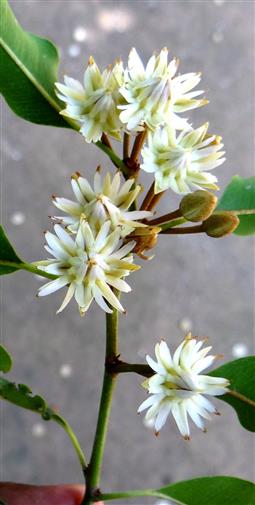SAPOTACEAE
Trees, less commonly shrubs, usually with milky juice Leaves alternate, simple, entire, penni-nerved, usually coriaceous; stipules usually absent. Flowers solitary or in cymose clusters in leaf-axils or above scars of fallen leaves, usually small, bisexual, actinomorphic, hypogynous. Sepals 4, 6 or 8 in two series or 5, free or slightly connate at the base, persistent. Corolla gamopetalous, campanulate or urceolate; tube short; lobes as many as sepals and uniseriate or twice as many and biseriate, sometimes branched with appendages so as to appear many seriate. Stamens inserted on the corolla tube, as many as corolla lobes and opposite to them, or 2-3 times as many, 1-3-seriate; filaments usually short; anthers oblong-lanceolate, bithecous, the connectives often produced, dehiscence longitudinal, usually extrorse. Carpels as many or double as many as stamens in a whorl; ovary superior, 1-12-locular; ovules solitary in each loculus; style shortly conical or elongate subulate; stigma minute. Berry 1-8 seeded, seeds ellipsoid, compressed if more than one, shining, smooth.
63 genera and about 800 species
Key to the genera
1. Fertile stamens 6, Calyx 6-lobed Manilkara
+ Fertile stamens 8, Calyx 6-8-lobed Mimusops


